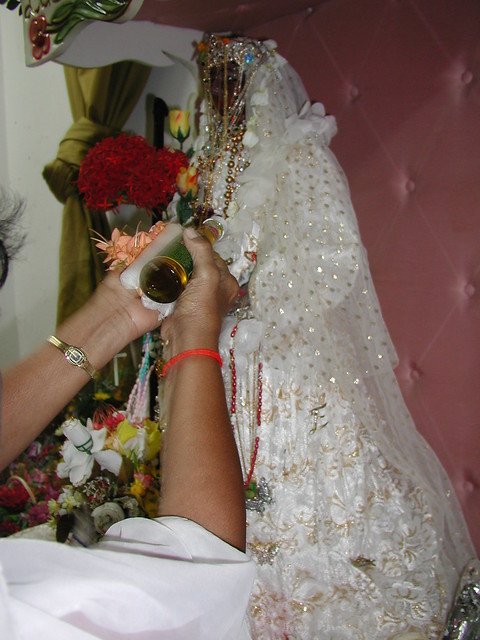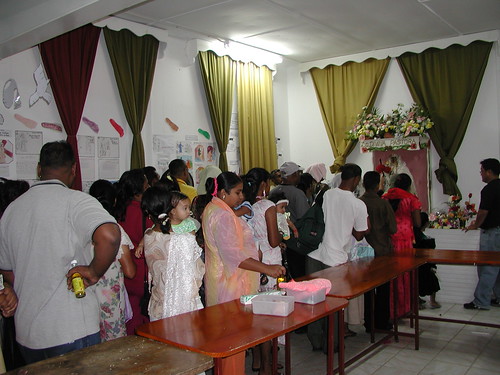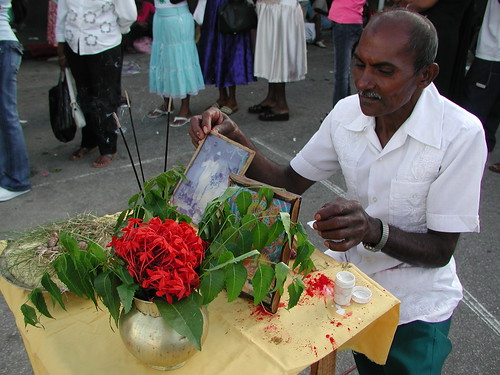By TCN Staff Reporter
Trinidad: Good Friday can be described as slightly different in Trinidad and Tobago, compared to the rest of the world.
On Good Friday, the Roman Catholics of the Caribbean nation will again share their church with thousands of Hindus, who will pay homage to the dark-skinned wooden statue of Virgin Mary, who Hindus worship as Mother Kali.
Anthropologist Dr. Kumar Mahabir recently presented a research paper on this phenomenon that has been taking place every Good Friday for over 140 years in the Roman Catholic Church in Siparia in Trinidad and Tobago.
Mahabir’s paper was entitled “Virgin Mary as Mother Kali: The Intersections between the Hindu Mother Kali and the Black Madonnas in Catholic Churches in Trinidad and beyond.” The paper was presented at an international conference themed “Turning Tides: Caribbean Intersections in the Americas and Beyond.” The conference was held on February 18th to 20th, 2016 at the University of the West Indies (UWI), St Augustine. It was organised by the UWI and Trinity College, Hartford, Connecticut, USA.

Since the 1870s, the Catholic Church has been partly transformed into a Hindu temple – but only on Good Friday. In this way, the Catholic Church plays a dual role. The same church serves two separate congregations in different ways, each reflecting ethnic temperamental differences.
On Good Friday, barbers cut the first hair of children near the entrance of the church’s compound. Hindu singers, dancers, musicians, poojaris [Mother Kali priests] and devotees stay outside, while Catholics listen to the sermon inside. In this way, the catholicity of the church accommodates non-Christians, for whom the annex and courtyard are reserved. The Catholic church provides a cultural and physical space in which Hindus and Christians collectively satisfy their individual religious needs in the multi-cultural society.

Mahabir’s paper identified and analysed the intersections between the Hindu Mother Kali (“Suparee Mai”) with the Black Madonnas in the Catholic church in Trinidad, as well as in churches in Haiti, Cuba, Mexico, France and Spain. These two seemingly disparate saints/statues provided an interesting study of the intersections between religions, cultures, languages, geography, history and mythology.
Mahabir found that the main intersections between Mother Kali and the Black Madonnas are shared in their mysterious origins, their dis- and re-appearances, their physical features, healing miracles, magical powers, and their cross-religious following. However, unlike the intersections anywhere else, the phenomenon of the Black Madonna being worshipped by Hindus in Trinidad is unique in the world.

In his paper, Mahabir talks about how Hindus have always had a voluntary, non-official and cordial relationship with the Catholic Church in Trinidad. “They participate in Old Saints’ Day by lighting candles on the graves of their departed relatives. This practice was first noted in the mid-1880s at the San Fernando and Mucurapo cemeteries. To this day, Hindus still climb their way to Mount St Benedict to have their cars blessed by Catholic priests. Hindu participation in pilgrimages to Mount St Benedict began as early as indentureship (1845-1917) when it became an annual event in which Catholic Indian converts took the lead. An article in a colonial newspaper (The Abbey 1987:17) described the procession:”

Talking about the role of Kali, Mahabir adds, “Some elderly Hindus have laid claim that it is their fore-parents who had first seen the apparition of a lady in white sitting on a stone under a karat [palm] tree where the church now stands. They further claim that the apparition was endowed with healing powers, just as Mother Kali. A record in Siparia parish around 1871 stated that the image of the Virgin Mary was brought from Venezuela by a Capuchin proselytising priest who publicly declared that it had saved his life.”

